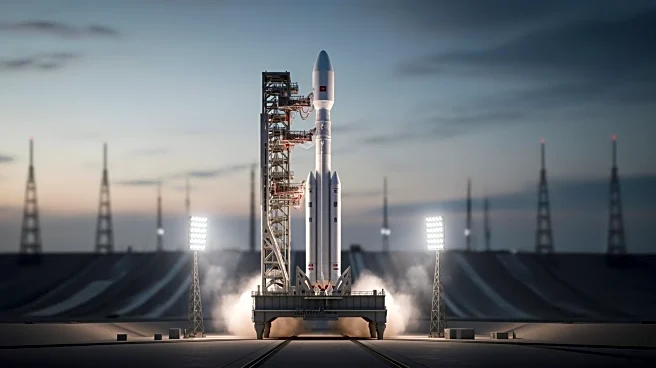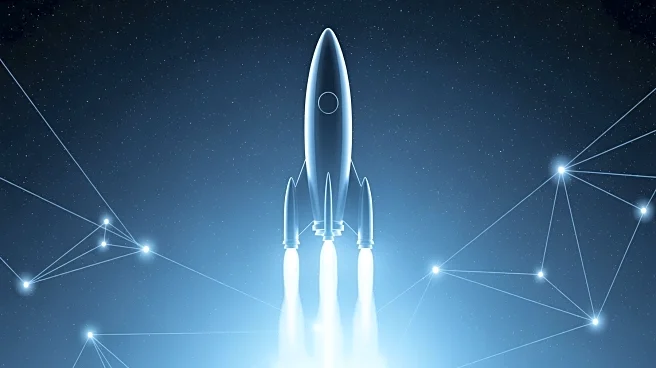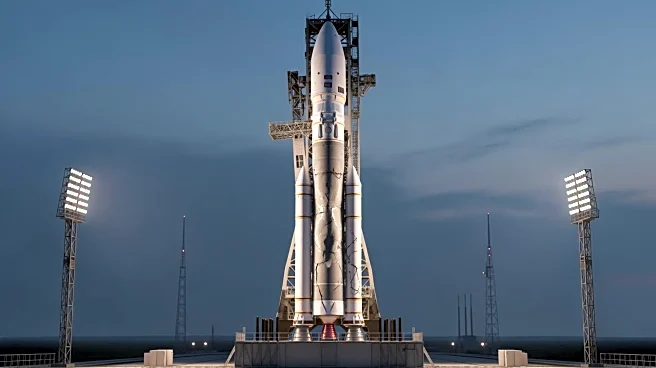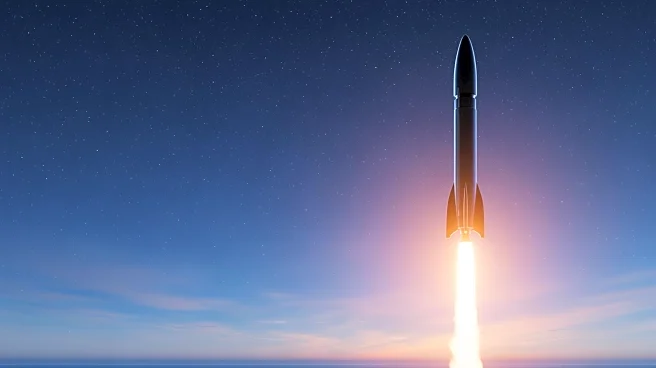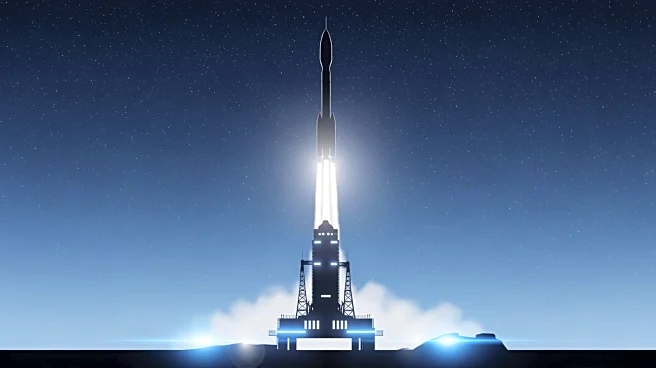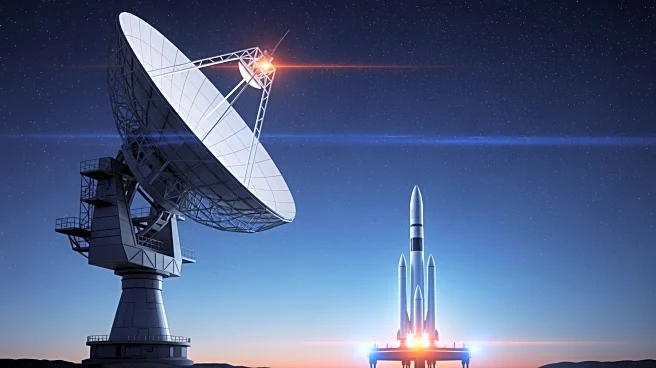What's Happening?
On November 23, 2025, SpaceX successfully launched 28 Starlink satellites from Vandenberg Space Force Base in California. The launch, part of the Starlink Group 11-30 mission, aimed to enhance global broadband
coverage. The Falcon 9 rocket used for this mission marked the debut of the B1100 booster, which successfully landed on the droneship 'Of Course I Still Love You'. This launch contributes to SpaceX's goal of densifying its satellite constellation, which now includes over 10,000 satellites. Concurrently, SpaceX faces challenges with its Starship program after a booster failure during a pressure test in Texas. The incident involved the V3 Starship booster, which is crucial for NASA's Artemis lunar missions.
Why It's Important?
The successful launch of Starlink satellites underscores SpaceX's growing influence in the global broadband market, with over 8 million active customers. This expansion is significant for regions with limited internet access, potentially transforming connectivity standards. However, the setback with the Starship booster could impact SpaceX's timeline for supporting NASA's Artemis missions, which are pivotal for future lunar exploration. The failure highlights the risks associated with developing new space technologies and may prompt NASA to consider alternative providers for lunar transport.
What's Next?
SpaceX plans additional Falcon 9 launches, including a rideshare mission from Vandenberg on November 26, 2025. For the Starship program, SpaceX must investigate the booster failure and rebuild the hardware, potentially delaying the first V3 launch. This delay could affect NASA's Artemis schedule, intensifying competition from other lunar transport providers. SpaceX's ability to address these challenges will be crucial for maintaining its leadership in space exploration.




